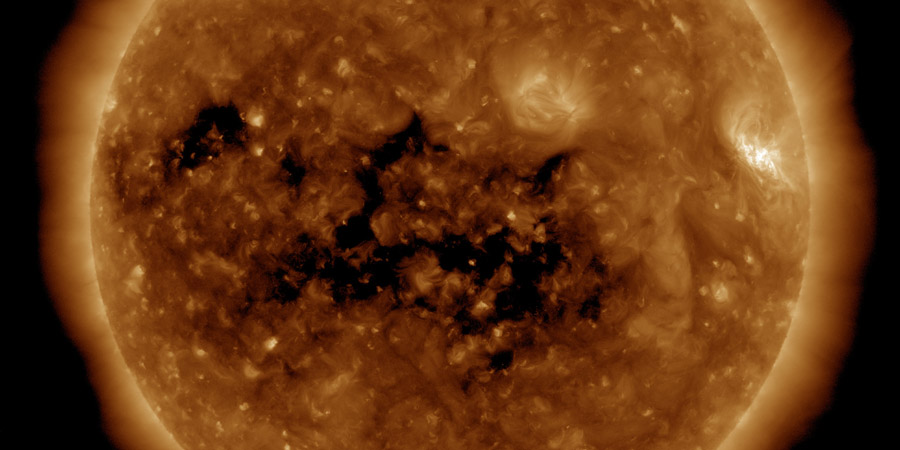Coronal hole faces Earth
Monday, 28 January 2019 20:10 UTC

A coronal hole is facing our planet today and sending a high speed solar wind stream towards our planet.
Our automated coronal hole detection system did its job and detected the coronal hole. An alert was send to the mobile app and our Twitter account:
A transequatorial coronal hole is facing Earth. Enhanced solar wind could arrive in ~3 days. Follow live on https://t.co/bsXLidnzGh pic.twitter.com/vfFgv4fhx9
— SpaceWeatherLive (@_SpaceWeather_) January 28, 2019
Compared to the previous rotation we see that this coronal hole changed a fair bit. It became a bit less cohesive but overall it has increased slightly in size. It is now also connected with the southern hemisphere polar coronal hole.
During the previous rotation this coronal hole caused one 3-hour period with minor G1 geomagentic storm conditions. It is likely that we will see similar solar wind conditions and geomagnetic effects this time around. We expect a co-rotating interaction region ahead of the solar wind stream to arrive on 31 January. This co-rotating interaction region will be followed by the onset of the high speed solar wind stream with solar wind speeds expected of about 600km/s. Active geomagnetic conditions are likely with a chance of minor G1 geomagnetic storm conditions both on 31 January and 1 February.
Unsure what all of this means? Check out our help article detailing all you need to know about coronal holes!
Thank you for reading this article! Did you have any trouble with the technical terms used in this article? Our help section is the place to be where you can find in-depth articles, a FAQ and a list with common abbreviations. Still puzzled? Just post on our forum where we will help you the best we can!
Latest news
Latest forum messages
Support SpaceWeatherLive.com!
A lot of people come to SpaceWeatherLive to follow the Sun's activity or if there is aurora to be seen, but with more traffic comes higher server costs. Consider a donation if you enjoy SpaceWeatherLive so we can keep the website online!

Space weather facts
| Last X-flare | 2024/03/28 | X1.1 |
| Last M-flare | 2024/04/25 | M1.0 |
| Last geomagnetic storm | 2024/04/19 | Kp7 (G3) |
| Spotless days | |
|---|---|
| Last spotless day | 2022/06/08 |
| Monthly mean Sunspot Number | |
|---|---|
| March 2024 | 104.9 -19.8 |
| Last 30 days | 133.9 +26.6 |


